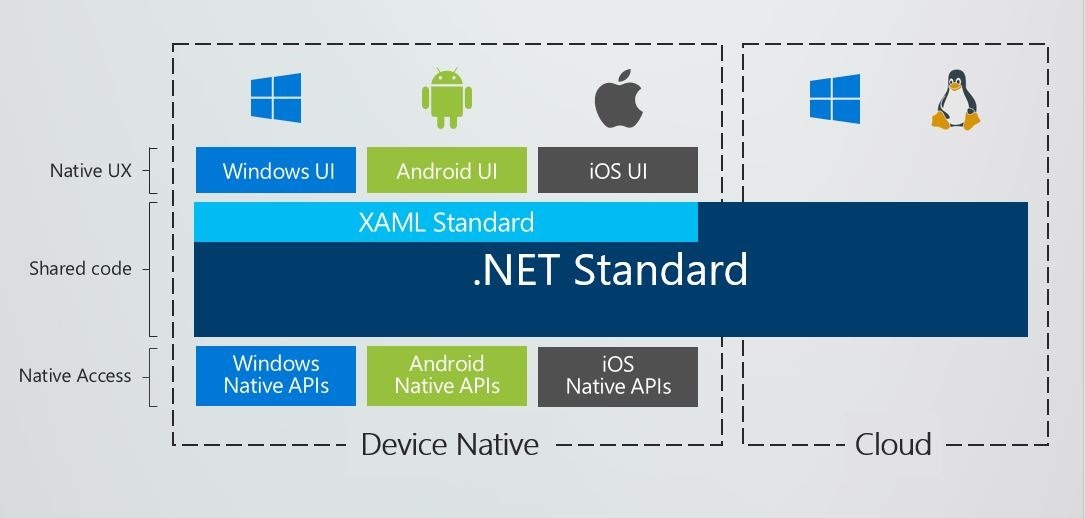The theme for Visual Studio during this year's Build conference appears to quite explicitly suggest that Microsoft is quite happy for developers to develop and build code wherever you feel comfortable, even if that is not Window 10. Considering the questions produced at Stack Overflow, we can generally infer that .NET Core (and to a lesser extent C#) are gaining in popularity.
Rather than rest on that success and the natural way the current toolset sits inside Window 10, Visual Studio Code led the charge as a genuine cross platform web tool. This idea of developing for any platform on any platform seems to be driving much of the current conversation.
.NET Standard 2.0 & XAML Standard 1.0
What may not be obvious to developers is that there are actually different incompatible flavors of .NET, and the differences are sometimes subtle and only become obvious once you are in the weeds of cross platform development effort. This puts Microsoft into an interesting position of asking developers to leave useful and productive pieces of code behind in the name of forward progress.
The .NET Standard Library got a bump to 2.0, and this allows developers to actually learn one API that works across all .NET platforms. The original version of the .NET Standard was limited in that the shared API was fairly small and was implemented using Portable Class Libraries (PCLs), this in turn meant that there were still many libraries that simply would not fit smoothly into the standard.
The newest .NET Standard provides a specification for any platform to implement, so for example Tizen from Samsung could follow this standard and immediately be able to take advantage of a growing list of compatible libraries. Of course all .NET runtimes provided Microsoft will implement the stand (.NET Framework, .NET Core, Xamarin, etc.).
For me personally I am looking at DasBlog and the way we can smoothly use years of reliable code buried in .NET 2.0.
.NET Core and Visual Studio for Mac (RTM)
When I heard back in November that the full Visual Studio experience would be available on the Mac it really brought home that Microsoft's strategy for targeting developers is no longer exclusively focused on Windows. This RTM is not meant to be a limiting experience, they intend to provide parity across platforms, sharing large amounts of the original code base that provide project templating, backend debugging and the Azure publishing infrastructure. It is, in fact, using the same Roslyn Compiler Platform and MSBuild project system.
Amazing!
Xamarin Live Player (preview)
While Microsoft proudly proclaimed that Windows 10 is on 500 million devices, it would be also truthful to say that the aspirational target was missed by half. Many of us have long since understood that the only realistic target for mobile development has always been iOS and Android, however, only Android was could readily built on a Windows desktop devices.
Now with the introduction of Xamarin Live Player we are able to deploy directly to an iOS device and your code can be debugged and tested on your Windows 10 machine. This is good but understandably not complete, final builds and app submission will still need to occur on a Mac making this solution less than optimal for lone developers who hope to support the entire software cycle from Windows. Still this is much closer than we have been.
Live Player will also support Android devices.
Additional News
- .NET Architecture Guidelines - I remember studying the original patterns and practices documentation, this new site is most welcome. I am primarily interested in Microservices and Docker Containers.
- .NET Core SDK 2 Release
- VS 2017 Update 3 Preview


Comments are closed.